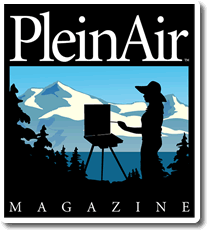The Brandywine River Museum in Chadds Ford, Pennsylvania, is now presenting the first in a series of exhibitions focusing on the creative process behind the development of major works of art. More than 30 studies — including outdoor drawings and paintings — that were used by Andrew Wyeth to develop the masterpiece “Ides of March” are shown. Take a look at those studies, his studio, and the finished egg tempera painting.
The Andrew Wyeth drawings and “Ides of March,” a rarely seen tempera painting from 1974, are on display at the Brandywine River Museum in Chadds Ford, Pennsylvania. They provide a remarkable look at Wyeth’s creative approach and evocative imagery. The presentation (March 16-May 19, 2013) is part of a new “Making of a Masterpiece” series at the museum and is accompanied by a fully illustrated catalogue with an essay by Virginia O’Hara, curator of collections at the Brandywine River Museum and curator of the exhibition.
Andrew Wyeth (1917-2009) rarely discussed his work. With few exceptions, he similarly chose not to exhibit his studies. The drawings, to him, had no lasting value beyond their purpose as reference material. This exhibition is part of a new five-year initiative by the Brandywine River Museum to reexamine the work of the extended Wyeth family of artists. The first milestone in the initiative was the opening of the Andrew Wyeth’s studio for public tours in 2012.
Wyeth’s initial concept for “Ides of March” sprung from his fascination with the abstract, geometric forms of the large fireplace in his own home in Chadds Ford and the dramatic contrast of light and dark therein. As shown in the exhibition, the artist’s initial drawing was a small monochromatic sketch in which he roughed out a dark rectangle for the fireplace’s shadowed recess. At the bottom of this framework — and developed further in subsequent drawings — is the white, simplified triangular shape of his dog, Nell. From this spare, notational beginning, the exhibition follows Wyeth as he explored various options for the composition in a series of pencil and watercolor drawings, changing the angle of view and the position of the natural light falling across the fireplace.
Visitors to the museum can immerse themselves in Andrew Wyeth’s world on guided tours of his studio. Wyeth painted in the studio from 1940 until mid-2008, and it is virtually intact, looking as it did when he last left it. The building also served as home for Wyeth and his family for more than 20 years. Tours of the nearby N.C. Wyeth House and Studio as well as the Kuerner Farm, which inspired nearly 1,000 works of art by Andrew Wyeth, are also available. These properties are owned by the Brandywine Conservancy, the parent organization of the Brandywine River Museum. Each may be toured separately, or on special packages that include a docent-led gallery tour of the Brandywine River Museum’s renowned collection. For more information, visit www.brandywinemuseum.org.
(Due to the age of this post, some images may be missing from this article. Visit our home page at OutdoorPainter.com to view the latest posts.)




